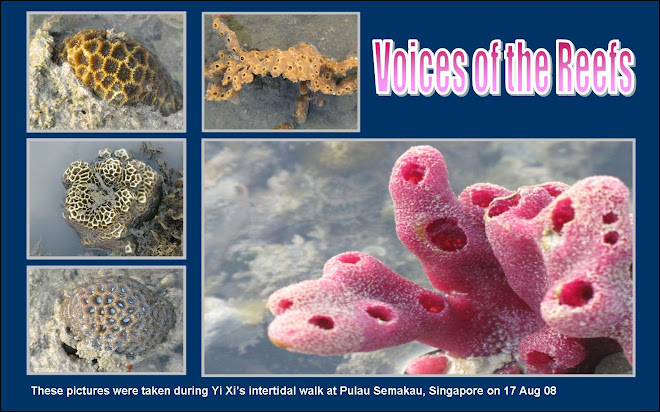Sorry for not updating for a long time. I had been really busy with schoolwork. But since the PSLE is over, now, I have lots of free time! Recently, our school organised a website designing competition about the 3Rs ( Reduce, Reuse and Recycle) . Though this has very little to do with marine life, but I feel that even though these two subjects are not really related closely, pollution of the Earth will affect everything. Thus, the 3Rs will still be able to help us conserve the oceans.
So basically, this website would be about what the 3Rs are, why do we need to recycle, how can we recycle and our school's efforts for the different years. After we were done making the site (using http://www.weebly.com/ ), we were to post it onto a forum page and our classmates could vote for the best site.
My website( http://littlegreenplanet.weebly.com/ ) actually emerged as one of those which had the most votes, so my Science teacher wanted me to present it to the class, along with a few other students whose websites were one of those which had the most votes. Through the various presentations, I found out a lot more about the 3Rs, and many interesting facts about the Earth as well.
I feel that my own site is relatively simple and does not contain very detailed or specific information. In my opinion, this site, http://chiaxinyi.weebly.com/, done by a friend, is better than mine. ((:
Her site is chock full of information and has many suggestions on how to reduce, reuse and recycle. Do visit her site if you can! It's really amazing. ((:
Every small effort counts. For example, if everyone saves one litre of water a day, in one day, about 7 billion litres of water can be saved! So, no matter how small the effort you think it is, it still plays a part in saving Earth!
Kathy

























































